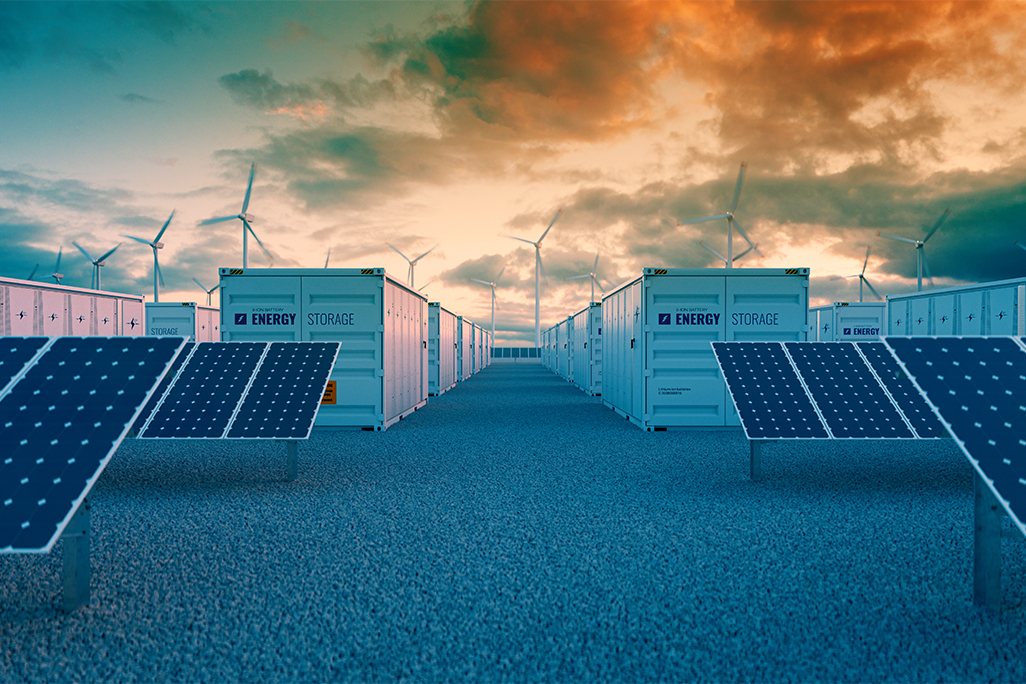The Energy Transition | UK government announces CfD changes
Published on 22nd January 2024
Welcome to our top picks of the latest energy regulatory and market developments in the UK's transition to net zero

This week we look at the government's latest changes to the CfD scheme, the largest nuclear expansion in 70 years, a report that suggests hydrogen from excess wind could decarbonise UK steel, and more.
Government proposes changes to seventh allocation round of the CfD scheme
The Department for Energy Security and Net Zero has published its proposals to amend the Contracts for Difference (CfD) scheme in advance of it latest auction, known as Allocation Round Seven (AR7). These changes are focused on the following areas:
- Repowering. The government is proposing to allow repowering onshore wind projects to apply for the CfD in AR7, in limited circumstances. The conditions for application include the projects not being in receipt of any other generation subsidy by the end of their applicable delivery year, the relevant technology already being eligible for the CfD scheme and the projects being able to maintain their current capacity throughout the term of the CfD contract.
- Floating offshore wind. The paper sets out proposals to expand the phased CfD policy to floating offshore wind projects to bring these in line with fixed-bottom offshore wind projects.
- Appeals process. The proposals include streamlining the appeals process, moving the qualification checks and appeals process before the round opens to applications. This aims to bring certainty to developers and provide a fixed timeline for projects.
- Hybrid metering and co-location. The government is considering introducing changes to metering so that it is easier for CfD generators to co-locate with other assets. The government suggests that a hybrid metering approach could be used to uncouple the CfD metering requirements from the Balancing and Settlement Code (BSC) at certain points. It is hoped this proposal would break down the barriers to viability that some innovative co-located generation models face due to the current metering requirements to separate CfD and merchant generation at the BSC level.
These proposed changes come after a period of stagnation in new offshore and onshore wind projects. Industry participants have been calling for changes to the CfD scheme since the previous auction round, where the low strike prices meant no offshore wind projects bid into the scheme (which we reported on here). The consultation marks a move by the government to boost support for offshore and onshore wind projects and reflects their recognition of the key role offshore and onshore wind projects have to play in reaching the UK's net-zero aims.
The proposed changes to the CfD would take effect for AR7 in 2025. The consultation closes on 7 March 2024.
UK government reveals biggest nuclear expansion in 70 years
The government has published its UK's civil nuclear roadmap, which sets out its strategy to meet the existing target of 24GW of nuclear power production by 2050.
The plan includes a pledge to secure between 3GW and 7GW of new nuclear investment every five years from 2030 to 2044. This could include a plant with the capacity of Hinkley or Sizewell, with the government aiming to set out the timelines and processes of a further large-scale reactor project before the end of this Parliament.
The strategy also includes the announcement of two consultations, the first of which seeks views on proposed material updates to the government's existing policy for siting nuclear power stations. The government states this is aimed towards designating a new nuclear national policy statement to facilitate the rollout of small modular reactors and advanced modular reactors alongside gigawatt-scale projects. This consultation closes on 10 March 2024.
The second consultation, open until 4 April 2024, seeks to examine how the government can use regulatory reform to facilitate alternative routes to market for new nuclear technology.
The prime minister, Rishi Sunak, stated that "nuclear is the perfect antidote to the energy challenges facing Britain". The secretary of state for energy security and net zero, Claire Coutinho, reiterated the government's commitment to nuclear generation at all scales, commenting that "from large gigawatt projects to small modular reactors, the UK’s wider nuclear revival will quadruple our nuclear capacity by 2050".
The announcements come in the same week that the developer of the 3.2GW nuclear plant Sizewell C has stated that construction work can now formally begin, as the conditions of its development consent order have now been satisfied.
Hydrogen from excess wind could decarbonise UK steel
The thinktank Policy Exchange's new "Turning Wasted Wind into Clean Hydrogen" report suggests green hydrogen may be one of the best solutions to the UK's grid constraint problems. Though the UK has placed a lot of focus on increasing the capacity for generation from renewable sources, the transmission and distribution networks have struggled to keep pace. Restrictions in the capacity and capability of these networks is increasingly resulting in significant grid constraints as an ever-increasing number of renewable generation projects look to connect to these networks.
Currently, where energy supply is at risk of exceeding demand, to ensure system stability generators are curtailed and compensated with constraint payments, which are ultimately paid by energy consumers. This leads to the undesirable situation where consumers pay more so that less energy can be generated.
The Policy Exchange report proposes that the vast amounts of wind generation currently subject to the curtailment described above could be redirected and leveraged to produce green hydrogen. The report's financial modelling shows that in 2022, the UK's curtailed wind generation could instead have produced 118,000 tonnes of green hydrogen in 2022 and that number is set to increase year on year. This solution would also help to alleviate the high upfront costs and lack of investment currently facing the relatively young hydrogen industry. Heavy industries such as steel, as well as long-distance transport could provide stable offtake sources for the green hydrogen generated, thereby providing an additional benefit in furthering the decarbonisation of these hard-to-abate sectors.
Angus MacNeil MP, chair of the energy security and net zero select committee, commented in the foreword of the report as follows: "These grid constraints are already costing households and businesses over £1bn per year, and will increase to over £3bn annually before planned solutions are implemented over the next decade, leaving wind turbines to spin idly in the meantime. With growing concern over the cost of net zero, we need to be smarter in how we deliver decarbonisation."
Ofgem approves new connections process for distributed generators
Ofgem has published its new connection process for determining whether connecting distributed generators to distribution networks would have a negative impact on the transmission network. The amendments to the existing process have been proposed as Ofgem recognises that the existing connections process can be inefficient and time consuming.
Under the current two-step process (which set out within the Connections and Use of System Code (CUSC)) distribution network generators (DNOs) must submit a request for a statement of works to the electricity system operator (ESO) if they believe connecting a small or medium generator could impact on the transmission network. The ESO then has 28 days to respond as to whether the generator will have a significant impact on the transmission network. An impact is currently judged to be significant if the connection requires expenditure greater than £10,000.
Depending on the ESO's assessment of how a new generator will impact the transmission network, there can be considerable delays and additional costs associated with the process.
Ofgem has decided to modify this process by formally adopting an existing approach that is currently used by DNOs known as appendix G – a document that is appended to bilateral connection agreements between the ESO and DNOs.
Appendix G allows the ESO to inform DNOs of how much headroom is available at grid supply points. DNOs then report their newly accepted connection offers to the ESO each month and if these do not exceed the headroom then the ESO will sign off on new connections. If headroom is exceeded, DNOs submit a confirmation of project progression for all connections in that batch.
Ofgem intends to incorporate this new process into the CUSC as a transmission impact assessment. When setting up this new process, the ESO will set a planning limit of the maximum power export a transmission network can distribute without further reinforcement for each grid supply point. The ESO will then set out indicative works required to increase the limit and it will be at the discretion of the DNO to decide how to allocate capacity below this cap.
This change will be implemented later this month.
This week's article was written with the assistance of Yasmin Howes, Projects Associate, Johnny Hartrick, Madeleine Begg and Luke Webb, Trainee Solicitors.



